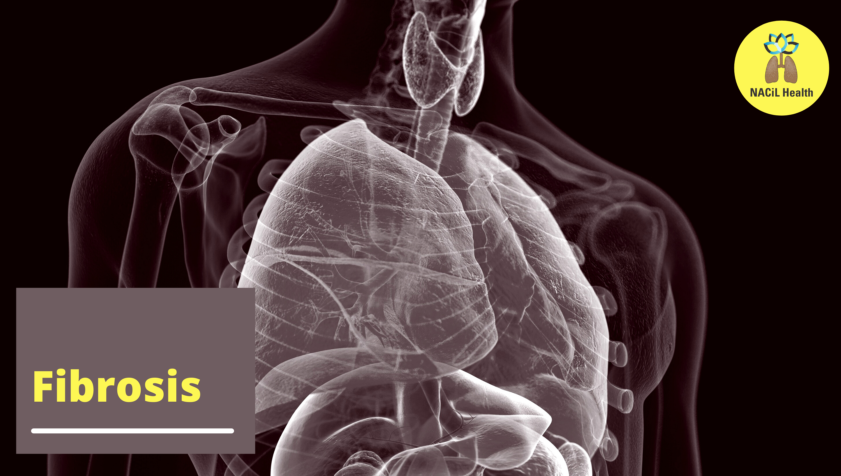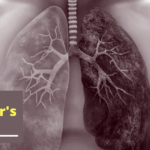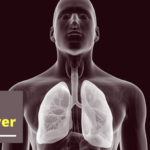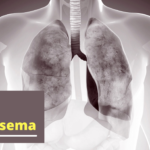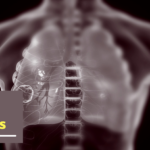Pulmonary Fibrosis is a condition in which the lungs become scarred over time that occurs when lung tissue becomes damaged and scarred where the air sac in the lungs (alveoli) becomes stiff making it difficult to breathe and get enough oxygen into the bloodstream. This thickened, stiff tissue makes it more difficult for your lungs to work properly. As pulmonary fibrosis worsens, you become progressively more short of breath.
Symptoms include shortness of breath, a dry cough, feeling tired, weight loss, and nail clubbing. Complications may include pulmonary hypertension, respiratory failure, pneumothorax, and lung cancer.

Causes include environmental pollution, certain medications, connective tissue diseases, infections (including COVID-19 and related SARS viruses), and interstitial lung diseases. Idiopathic pulmonary fibrosis (IPF), an interstitial lung disease of unknown cause, is most common. Diagnosis may be based on symptoms, medical imaging, lung biopsy, and lung function tests.
There is no cure and there are limited treatment options available. Treatment is directed towards efforts to improve symptoms and may include oxygen therapy and pulmonary rehabilitation. Certain medications may be used to try to slow the worsening of scarring. Lung transplantation may occasionally be an option. At least 5 million people are affected globally. Life expectancy is generally less than five years.
The scarring associated with pulmonary fibrosis can be caused by a multitude of factors. But in most cases, doctors can’t pinpoint what’s causing the problem. When a cause can’t be found, the condition is termed idiopathic pulmonary fibrosis.
The lung damage caused by pulmonary fibrosis can’t be repaired, but medications and therapies can sometimes help ease symptoms and improve quality of life. For some people, a lung transplant might be appropriate
Idiopathic pulmonary fibrosis is a relatively rare and serious condition. Although men tend to be affected more than women, anyone can get the disease. Some risk factors for IPF are smoking, working with environmental pollutants, acid reflux, and a family history of the disease.
Key Facts to know about Pulmonary fibrosis
- The overall prognosis of someone with pulmonary fibrosis will differ from person to person depending on their age, overall health, lifestyle choices and the severity of the disease when diagnosed.
- There are four different stages of pulmonary fibrosis: mild, moderate, severe and very severe.
- Pulmonary fibrosis patients are advised to undergo pulmonary rehabilitation where they will learn all about the disease, the treatments available, breathing techniques and be placed on an exercise program.
- As the condition progresses, a person with pulmonary fibrosis is at risk of other health complications including heart attack or failure, stroke, pulmonary embolism, and other lung diseases and infections.
- There is currently no cure for pulmonary fibrosis but treatments and therapies are improving all the time.
- The average life expectancy of someone with pulmonary fibrosis is three to five years but if it’s caught early, treatment can help slow down the progression of the disease.

